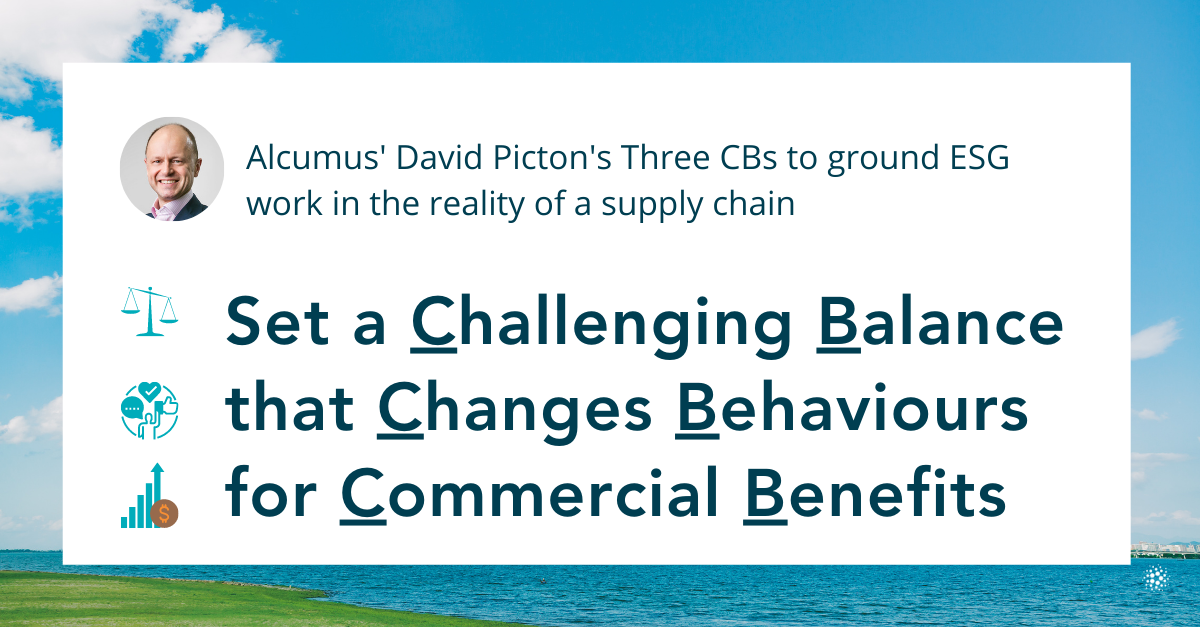“ In sustainable supply chains, companies...Use their leverage to influence business partners and other stakeholders to make the changes necessary to make the chain more sustainable…Are fundamentally curious and innovative, seeking out issues and using their power to address them.”
At Levin Sources, we believe sustainable supply chains build enduring value for people and the planet, through better business and good governance. We work with companies across the supply chain, from some of the biggest global brands in the world to small SMEs, including artisanal and small-scale miners.
Our clients are motivated to improve their supply chain’s sustainability by environmental and human factors. And they understand that sustainability is inextricably linked to their viability and the value of their business and industry.
They don’t, however, always know where to begin. The first questions companies ask are often: where to start, what to focus on, how to prioritise?
David Picton, head of Sustainability and ESGs at Alcumus, stresses that every company's organisational business supply chain is going to be different, but “it’s crucial to check and understand what really matters within and across that company’s specific supply chain – what are the most material aspects.”
The issues your company is best positioned to address will be specific to your supply chain because that is where you can exert influence, but it is also where you hold a responsibility to act.
This may seem obvious, but the key here is to derive action from specific opportunities within your supply chain, rather than starting with global issues and seeing how (or whether) your supply chain can make an impact.
1. Focus on impact
There will undoubtedly be common themes when you consider what factors are relevant to your company’s supply chain: waste management, carbon output, transportation and storage, chemical usage, for example. It is important to realise, however, that other areas might rise to the fore, presenting new challenges - and new opportunities. Grounding ESG work in the individual materials and real-time realities of your supply chain - rather than esoteric goals - creates opportunities to assess what matters within your supply chains and prioritise what you really need to be tackling to maximise impact.
Picton frames this as the three ‘CBs’: set a challenging balance that changes behaviours for commercial benefits.
The three CBs can be helpful in grounding the work of well-meaning companies. In the ESG rich environment, it’s as easy to become myopic: focusing on just carbon for example.

Meanwhile, there may be aspects of a supply chain that, because of a company’s specific supply chain and business model, create even greater opportunities for positive change: waste management, water management, biodiversity protection, or good governance.
2. Identify risks to create opportunities along the mineral’s value chain
Having big impact means ensuring that your company’s activities are as positive as possible. Imagine if your company’s impact on every person and environment it affects improved those people’s lives and the nature around them. Talk about transformational impact!
But where to begin? A company – including its entire value chain – has a huge impact on people and nature. Prioritisation starts with focusing on addressing the most severe risks to people and planet first. This approach both maximises positive impact and fulfils the standard of conduct set by global norms and, increasingly, legislation.
At Levin Sources, we help clients prioritise amongst ESG issues based upon a company’s supply chain impacts using a data-driven summary of the ESG performance of a material’s value chain which helps companies improve sustainability and fulfil their responsibility to respect human rights.
This ensures a company focuses on the right set of risks so money and time aren’t wasted, so impacted people, organisations and environments can be supported and access remedy, and so gaps don’t become surprise scandals because they understand better the salience of their ESG risks in all parts of the value chain. More accurate information on their ESG risks allows companies to assess their potential risk exposure with greater precision.
3. Clear expectations matter
The companies who are leading in supply chain sustainability understand that supply chain sustainability, human rights, and environmental impact goals are not in conflict, but mutually compounding. They also understand that it takes buy-in across the entire supply chain and across diverse stakeholder groups.
Mark Jankovich, founder and CEO of Delphis Eco has a massive sign on the wall of his office that reads “Be Green at Every Stage.” It is a mantra that the ecological cleaning products and certified B-Corp company CEO applies across his business - and supply chain.
What makes Delphis Eco disruptive to the £27.2 billion ($34.6 billion USD) cleaning product market, is not just a core value that all products “work as well as their nasty competitors” but clarity of expectation across its entire supply chain about environmental, human, and cultural expectations.
It’s important to note that expectations around sustainability are not just norms or aspirations but are increasingly underlined by legal structures. This year, the EU is expected to pass new legislation requiring companies to perform supply chain due diligence on the environmental and human rights (EHR) risks in their supply chains in line with the United Nations Guiding Principles on Business and Human Rights (UNGP).
Sustainability requires a mindset of continuous pursuit rather than a static destination and an appetite for opportunity capture and not just risk management. Focusing on impact, thoughtfully interrogating risks to identify opportunities and driving impact by clarity of expectations are first steps.



